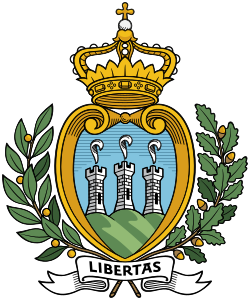 |
|---|
San Marino elects on the national level a legislature. The Grand and General Council (Consiglio Grande e Generale) has 60 members, elected for a five-year term by semi-proportional representation with national majority bonus (the winning coalition receives at least 35 seats on 60).
Contents
- General elections
- Last election
- Election results, 1945–2024
- Local elections
- Referendums
- See also
- External links
San Marino has a multi-party system, with numerous parties in which no one party often has a chance of gaining power alone, and parties must work with each other to form coalition governments.
The first elections were held in March 1906 after the Arengo held on the same year that established democracy in the country. Between 1926 and 1943, the Sammarinese Fascist Party took power and all other parties were banned. Democracy was restored in 1945.
Since early 2008, there has been an electoral threshold of 3.5%. Since 2016, if none of the coalitions achieves an absolute majority of seats, a runoff between the two largest coalitions is held.
